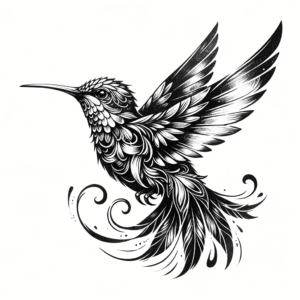
Watercolor Tattoo Ideas
Watercolor tattoos are great for people who want to express an emotion or meaning in a special way that leans on the artistic. Below, we have posted 250 unique design ideas for you to use as inspiration for your next watercolor tattoo. You can also put our tattoo creator powered by AI to use if you have an idea of your own already.
No results found!


Cross tattoo in watercolor…

Koi fish wrapped around…

Lotus flower with watercolor…

Bold Abstract Watercolor Splash

Colorful Galaxy With Planets…

Outer Space With Astronaut…

Night Sky With Stars…

Gentle Watercolor Floral Bouquet

Gentle Watercolor Hummingbird

Dreamy Watercolor Galaxy

Elegant Watercolor Peacock Feather

Ethereal Watercolor Bird

Delightful Watercolor Dolphin

Refined Watercolor Flower Bouquet

Polished Watercolor Fox

Charming Watercolor Dragonfly

Alluring Watercolor Hummingbird

Romantic Watercolor Horse

Gentle Watercolor Feather

Enchanting Watercolor Hummingbird

Commanding Watercolor Wave

Gritty Watercolor Raven

Spartan Watercolor Lion

Rugged Watercolor Wave

Invincible Watercolor Lion

Gallant Watercolor Hawk

Champion Watercolor Lion

Determined Watercolor Lion

Barbarian Watercolor Hawk
Didn’t Find What You’re Looking For?
Watercolor Tattoo Designs & Ideas
Popular Watercolor Tattoo Styles
Watercolor tattoos are extremely popular today, thanks to the fact that they are very unique, vibrant and often flowing. People who are more artsy or want that type of appeal will get these tattoos and mix them with traditional styles to convey a specific meaning.
For instance, a very popular style is abstract. The artist will use color splashes without any defined outlines, which makes the watercolor tattoo look as if it was painted onto your skin directly.
Florals and animals are great for watercolor tattoos, as they can come to live with this style. Daisies, lotuses and roses are among the most popular flower choices, while butterflies and birds are at the top of the list for animals.
Watercolor tattoos are also a great way to present nature or a specific landscape, including forest, oceans and mountain ranges.
Best Watercolor Tattoo Placements
Since watercolor tattoos can be very free-flowing, it’s important to place them in the right spot on your body.
One of the most popular places is on the forearm. Not only does this allow the artist to wrap the tattoo around your arm, but it provides a place where your tattoo can be viewed at all times if you want. You can do this on your upper arm, too, to follow a similar style but be a little more discreet.
The back is a great place for a larger design. Animals and portraits are great here, especially if you’re going to incorporate different elements such as scenery or a background.
The chest and/or neck is usually very good for watercolor tattoos, and it can wrap from one part of the body to another.
Women’s Watercolor Tattoo Ideas
Women usually get watercolor tattoos that emphasize their creativity, softness and beauty. They are very artistic but extremely personal as well.
Among the most popular women’s watercolor tattoos are of birds or butterflies. These can symbolize their beauty, transformation or freedom. In many ways, these tattoos can be drawn to look very dreamlike.
Stars, constellations and other cosmic elements are great for watercolor tattoos. The galaxies can look like they’re being brought to life if you follow this style.
Men’s Watercolor Tattoo Ideas
Men often go bolder with their watercolor tattoos to represent their masculinity and strength. These tattoos also play into the artistic nature as well, though, which brings some softness to them.
Popular tattoos include animals such as tigers, wolves or lions. They can be drawn in very vibrant ways with many flowing colors to represent their courage and power.
Skulls designed with fire or other vibrant elements are great for a watercolor tattoo style, too. You can even have a big background and surrounding elements that make it a very in-depth piece.
Watercolor Tattoo Meaning
Watercolor tattoos are considered very organic because of the style of the blending colors and less defined outlines. This can represent a person’s fluidity, creativity and power at the same time.
They can also represent the softer sides of life, including beauty, emotion and remembrance.
Create Your Own Watercolor Tattoo!
Popular Styles
Popular Placement
Related Ideas